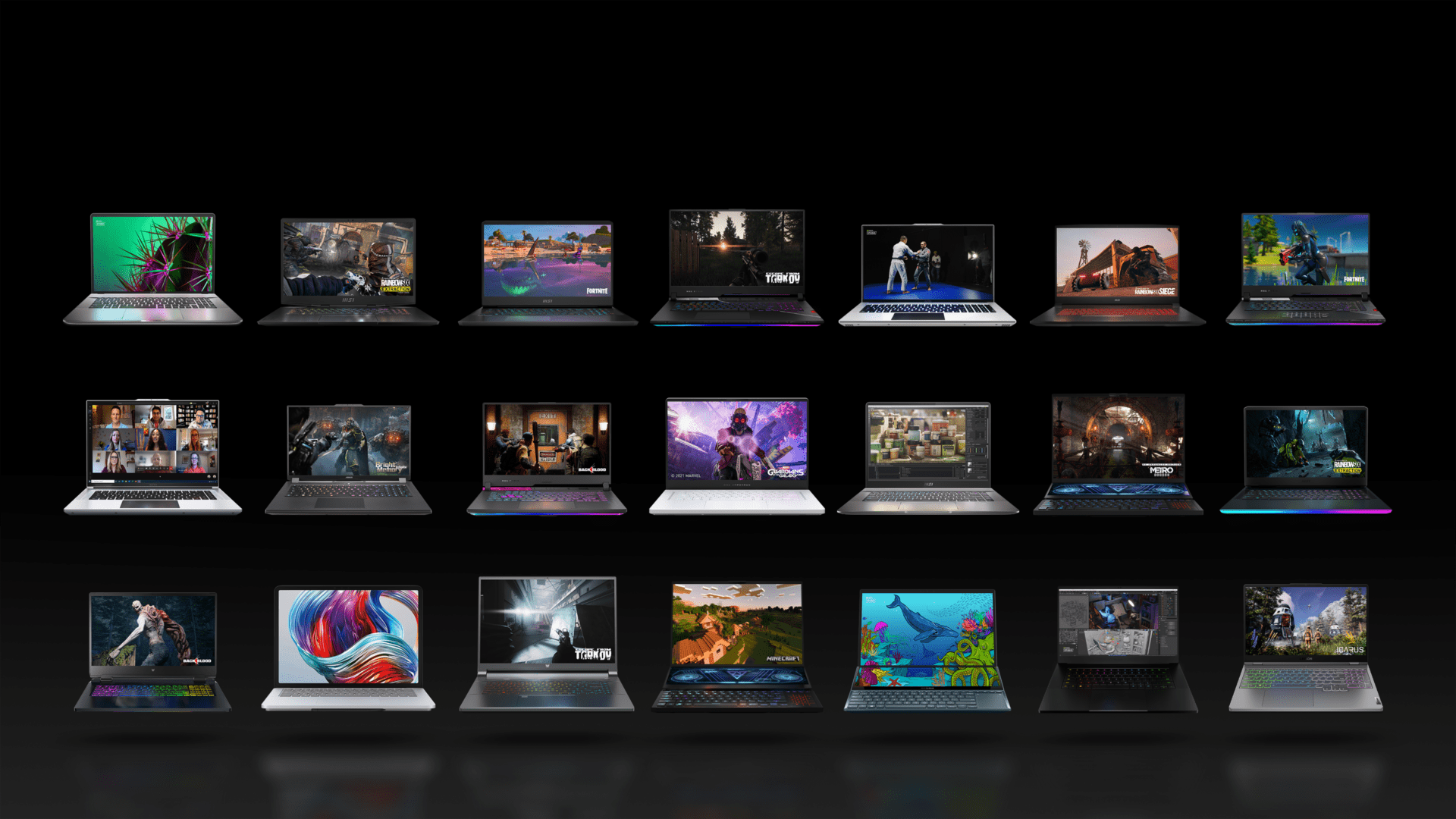Gamers and content creators have been anticipating the arrival of newly announced products from NVIDIA at CES 2022. The wait is over and the tech giant released two brand new series of gaming laptop chips – the GeForce RTX 3080 Ti and RTX 3070 Ti Laptop GPUs. These two new GPUs will feature in new Gaming and Studio laptops at launch and will form a big part of 2022’s performance laptop releases from major brands. That’s not all. Many of these laptops will also feature the new 4th Generation Max-Q technologies that further enhance efficiency, performance, and battery life.
Before you get your hands on a GeForce RTX 30 Series laptop which has been available from February 1st, learn more about the technologies behind it and why it’s touted as the very best for content creation and gaming.
GeForce RTX 3080 Ti and RTX 3070 Ti laptop GPUs hit the laptop scene
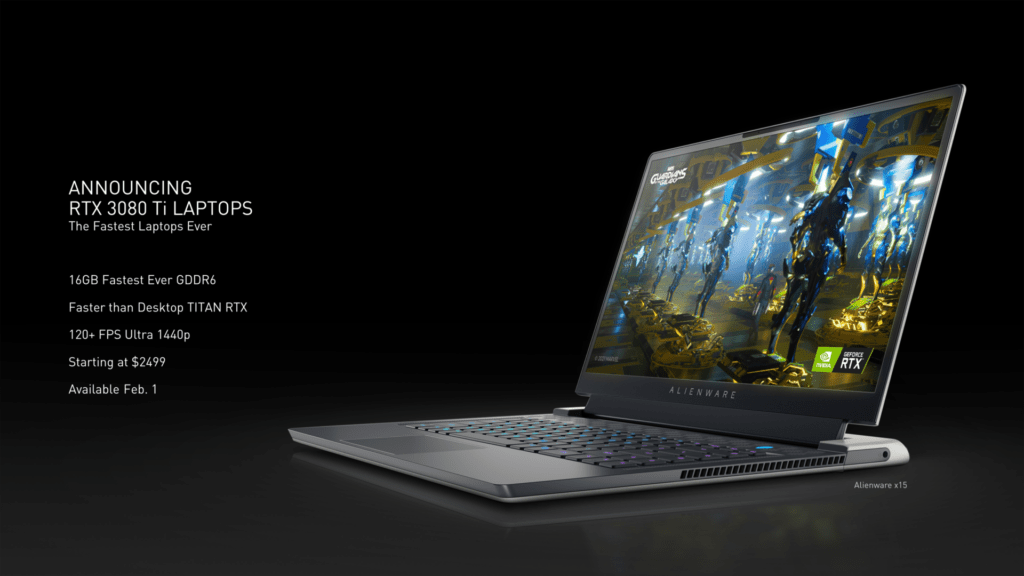
For the very first time, NVIDIA has made its flagship 80 Ti class of GPUs hit the laptop scene. Shipped with 16GB of GDDR6 dedicated memory, the GeForce RTX 3080 Ti offers greater performance than the desktop TITAN RTX. In fact, the new GeForce RTX 3080 Ti for laptops is currently claimed to be the fastest consumer-grade graphics card found in consumer and professional laptops.
Take a look at the performance differences between the new RTX 3080 Ti Laptop GPU and its predecessors below:
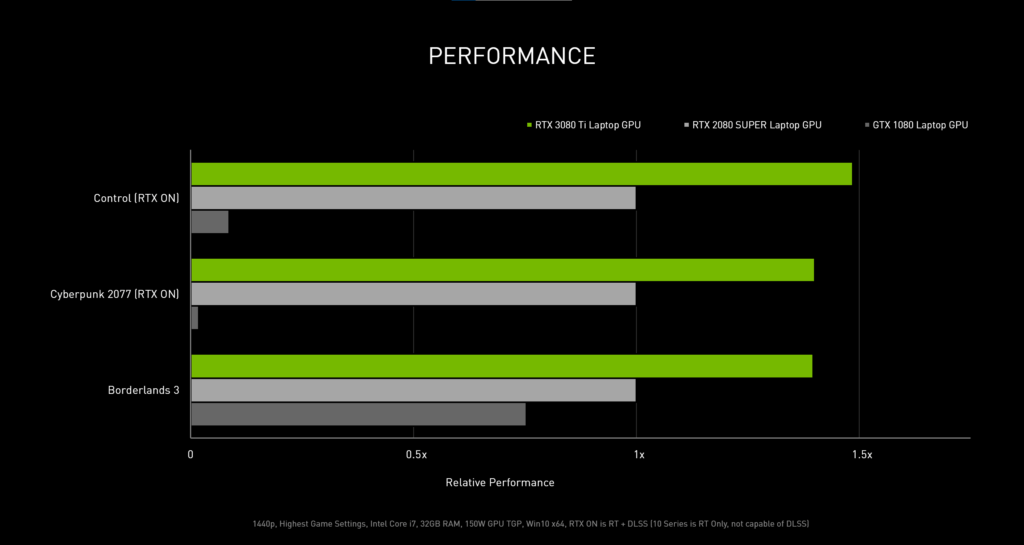
On top of GeForce RTX 3080 Ti, NVIDIA announced that its fast-growing class of laptop GPUs will see the likes of Ti with the addition of the new GeForce RTX 3070 Ti.
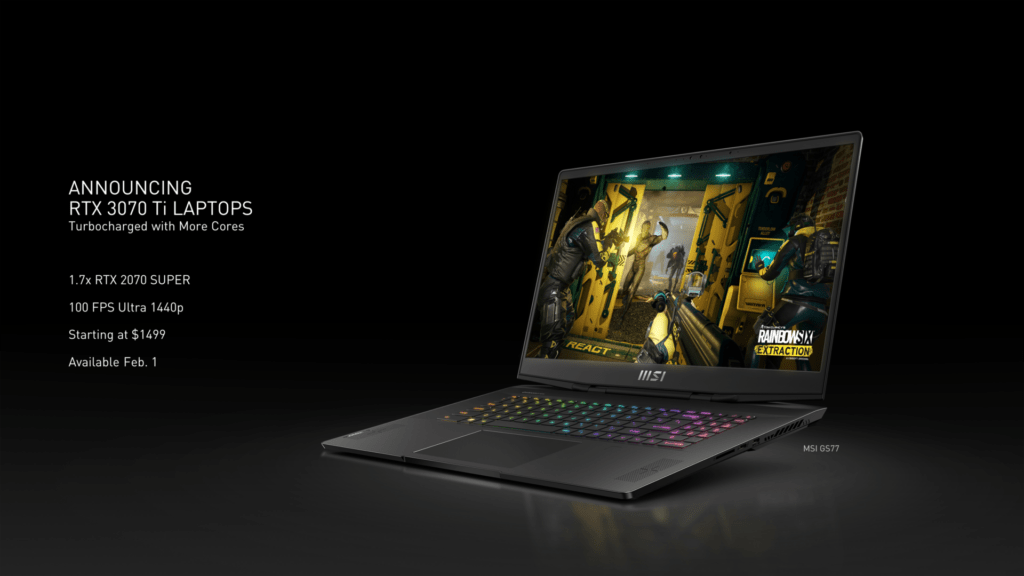
For users who are yearning for a superb gaming experience on 1440p resolution, the new GeForce RTX 3070 Ti Laptop GPU is designed for it. It brings with it a significant performance upgrade – up to 70% faster than the previous-gen GeForce RTX 2070 SUPER. The new RTX 3070 Ti will be a compelling upgrade from the two-year-old RTX 2070 SUPER.
Game and create with full force with GeForce RTX 3080 Ti and RTX 3070 Ti Gaming and Studio Laptops
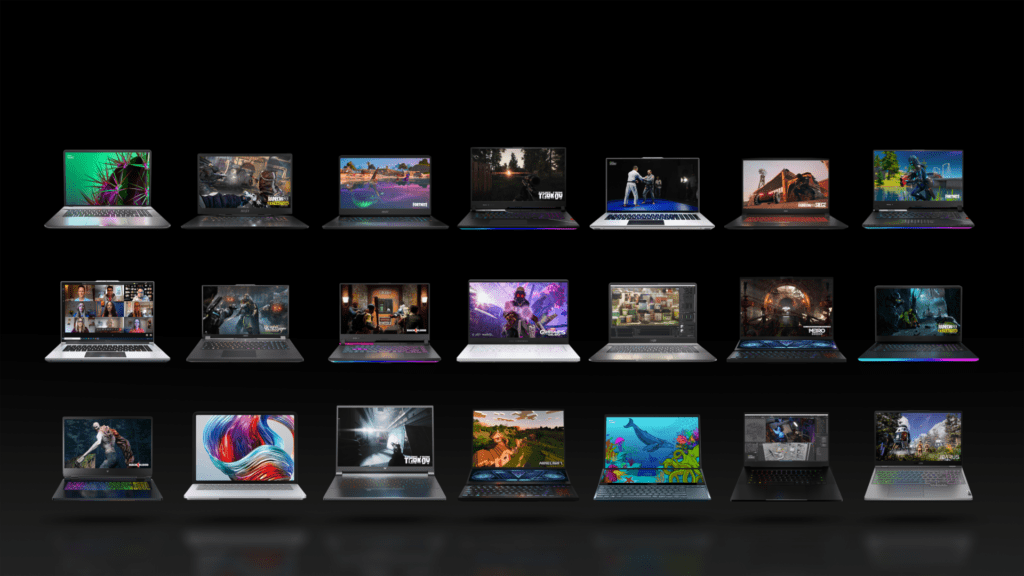
Since February 1st, Alienware, ASUS, MSI, and Razer released the initial batch of performance laptops to feature the new GeForce RTX 3080 Ti and RTX 3070 Ti. More brands will join them in the coming months.
With the addition of the latest GeForce RTX 3080 Ti and RTX 3070 Ti equipped laptops, major brands such as Acer, ASUS, Dell, HP, Gigabyte, Lenovo, MSI, Razer, and more of NVIDIA’s partners, have successfully introduced more than 160 new and updated GeForce RTX 30 Series laptops to the market. With a variety of performance laptops to choose from at prices starting from USD $799, there will be a product that can meet your distinct needs for work and play.
Additionally, NVIDIA announced the launch of the new built-for-creator NVIDIA Studio Laptops from MSI and Razer. Equipped with a range of GeForce RTX GPUs, these laptops are optimized for content creation and render support for more than 75 RTX-accelerated creative applications, exclusive NVIDIA Broadcast and NVIDIA Canvas apps, and NVIDIA Omniverse for creators. To further enable your creative workflow, these laptops feature RTX hardware-accelerated ray tracing, AI, and NVIDIA’s high-performance video processor.
NVIDIA: Changing the way laptops are built with 4th Generation Max-Q Technologies
On top of the two new graphics cards designed for the next generation of Gaming and Studio laptops, NVIDIA introduced its 4th Generation Max-Q technologies. These new technologies will power the latest thin and light performance computers from the various brands in 2022.
First developed in 2017, NVIDIA’s Max-Q design changed the way we looked at high-performance notebooks. The Max-Q design philosophy enabled the laptop’s graphics card to run at its most optimal power and performance levels. This improved efficiency led to the introduction of thin, light, and yet high-performing laptops to the market, all of which stood in contrast to the huge, bulky, and heavy designs that we were used to seeing, owing in part to the laptop’s cooling and power requirements.
Later upgrades to the NVIDIA Max-Q design enabled even more power and performance optimization features which changed the way performance laptops were designed.
Five years on, NVIDIA’s latest 4th Generation Max-Q sees technologies such as CPU Optimizer, Rapid Core Scaling, and Battery Boost 2.0 introduced for manufacturer’s implementation on their latest laptop computers.
CPU Optimizer
A major upgrade to the Max-Q design is the introduction of the new CPU Optimizer feature.
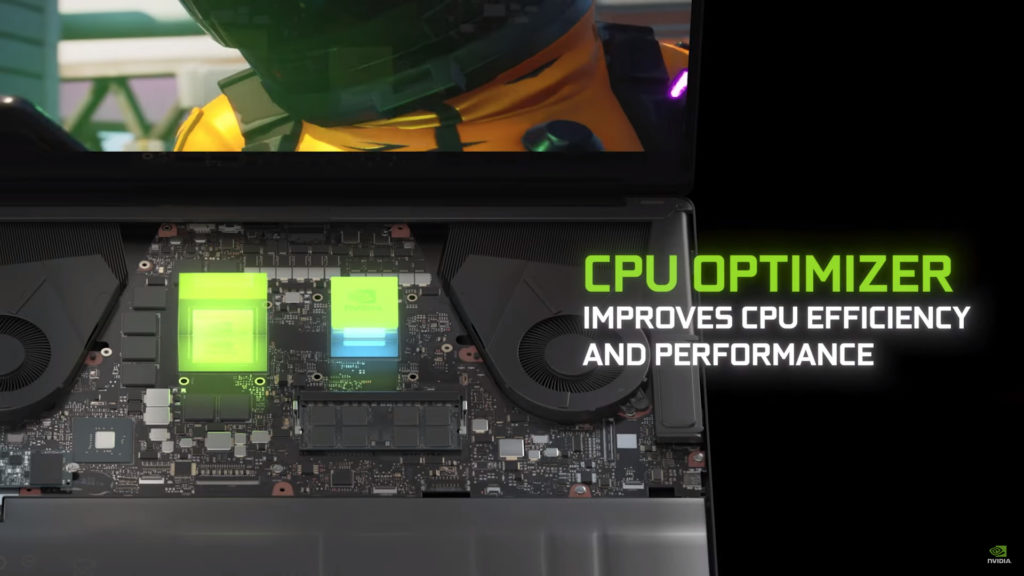
There are two main considerations that directly affect the performance of a laptop – power and thermal limits. For the design and engineering of high-performance laptops, manufacturers have to properly manage between these two limitations to attain the best possible outcome in performance.
As power and thermal dissipation resources are shared between both the GPU and CPU on laptops, they usually affect one another in performance. To best optimize performance on laptops, there is a need to dynamically allocate resources to the right components at the right time, under different workload requirements.
With CPU Optimizer, NVIDIA has worked towards a deeper level of integration with the CPU, understanding workloads and scheduling limits to further improve efficiency and power allocation between the CPU and GPU. This allows both the CPU and GPU to better respond to workloads and ultimately, ensure efficiency for the whole laptop system.
Specifically, NVIDIA worked with CPU vendors to create a new low-level framework that enables the GPU software to optimize the performance, temperature, and power of the latest CPUs. Based on the GPU’s detailed workload telemetry, an AI engine coordinates both the GPU and the CPU to determine the optimal frequency for both processors in real-time. The AI regulates the CPU to run at peak efficiency instead of peak frequency. As a result, power is saved and transferred to the GPU to boost overall performance.
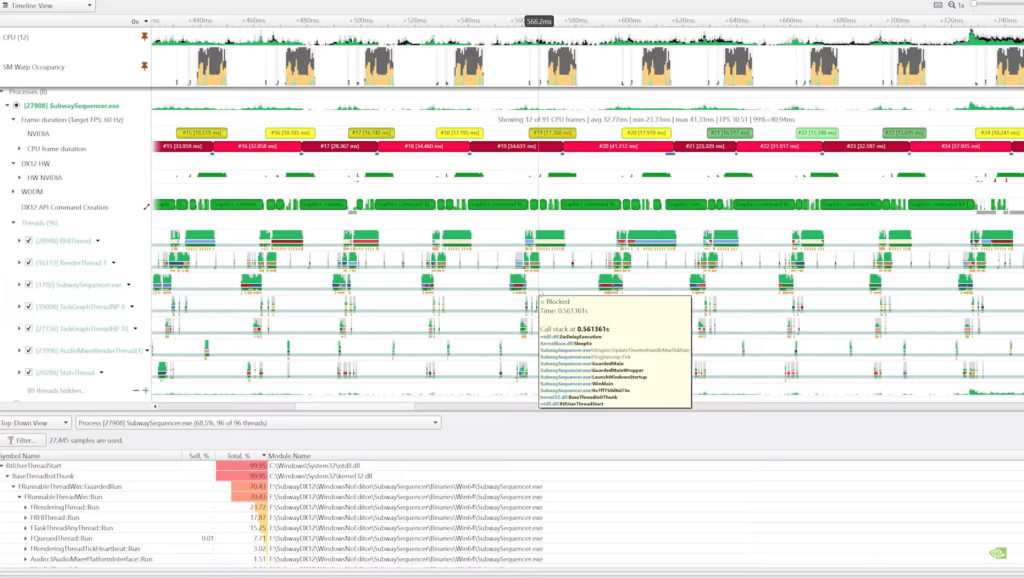
CPUs are not designed to run graphics APIs efficiently. To further improve the efficiency of CPU performance, NVIDIA profiled major graphics APIs which ran on the CPU and changed the way these instructions are scheduled and processed. This is done by having a driver which runs multiple threads across the CPU cores. Upon the detection of inefficient graphics API usage, the instructions can then be better processed with improved synchronization and internal data structures. This way, threads do not need to block and wait on each other. The difference in such implementation has led to the doubling of CPU efficiency when tested on directed API workloads.
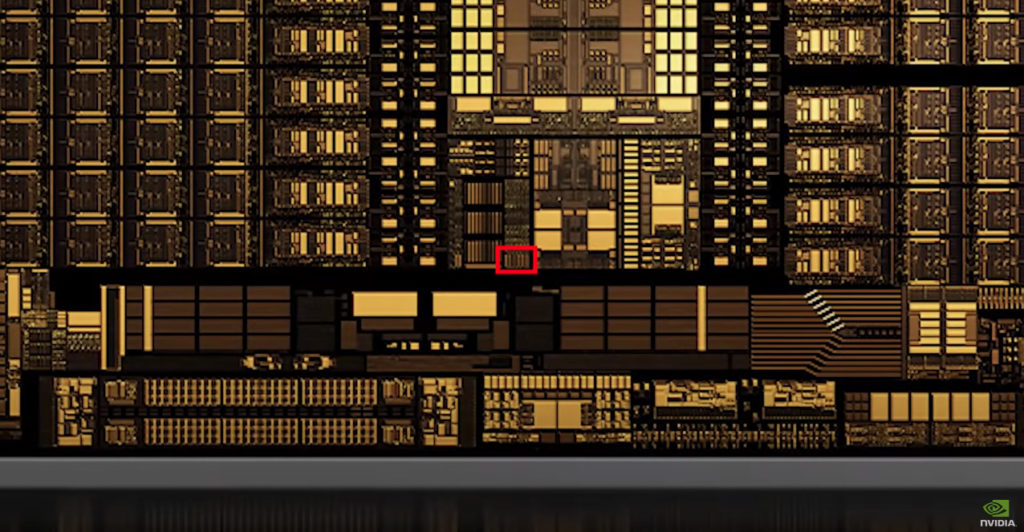
Another key technique for optimizing system power is to move work from the CPU to a dedicated command processor on the GPU. NVIDIA has used it to offload the CPU from low-level tasks. An example is command validation, which performs pointer verification and balance checking. This routine task now happens on the command processor enabling both the GPU and CPU to focus on other computations.
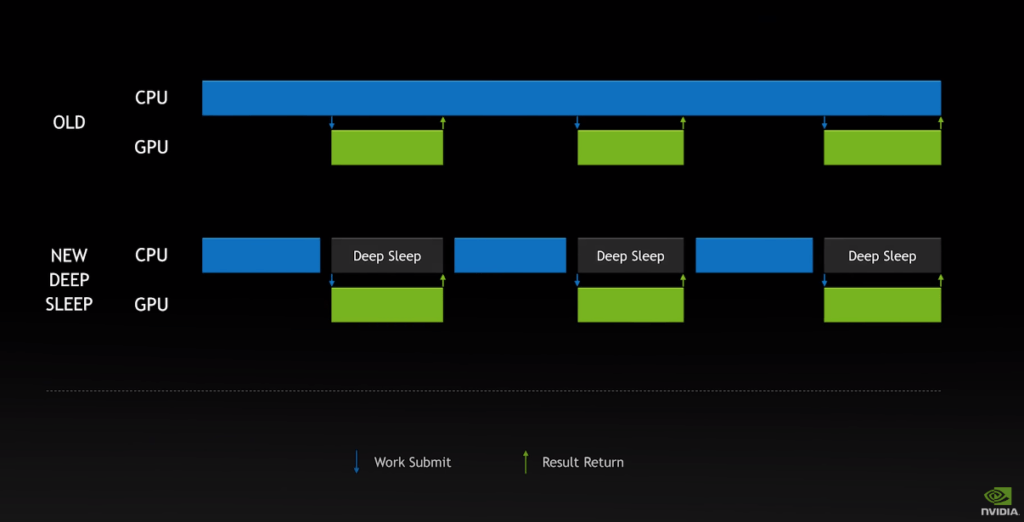
For creator apps, NVIDIA further optimized how the CPU sends work to the GPU and collects the results back. The driver now puts the CPU into deep sleep while the GPU is working. Upon completion, the GPU immediately wakes up the CPU, improving both responsiveness and efficiency.
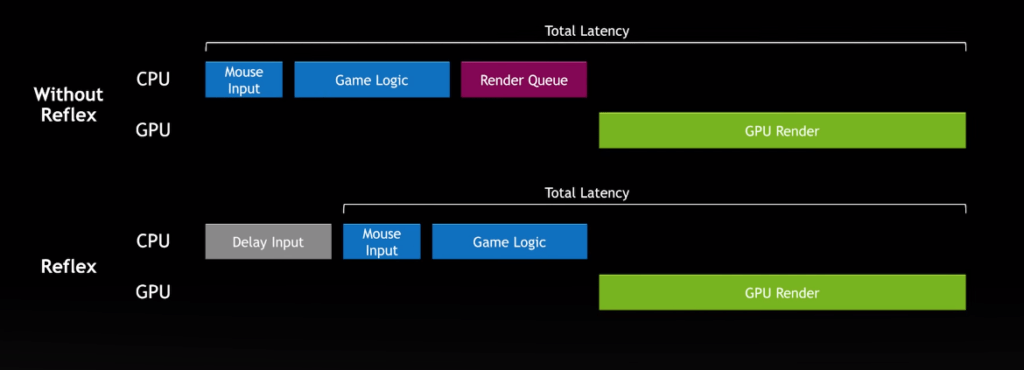
The same approach used for creator apps is used to enhance NVIDIA Reflex for gamers. By putting the CPU into deeper low power states until it is time to sample inputs, this technology allows the game to read the mouse and keyboard states as late as possible before a frame is displayed. This reduces latency by enabling the image your eyes see to reflect the most recent possible input. NVIDIA Reflex also uses less CPU power and overall fps is increased.
Rapid Core Scaling
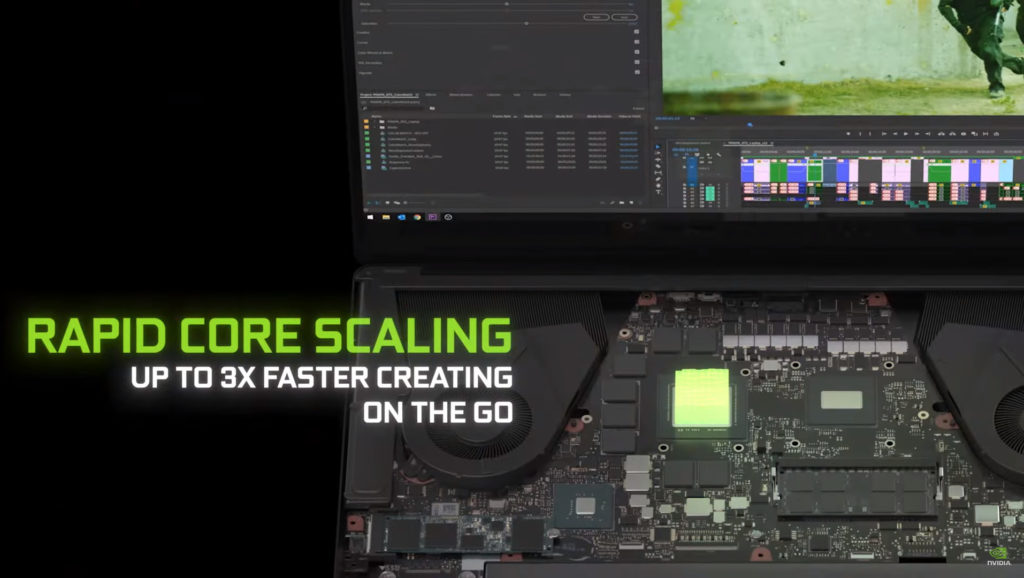
Rapid Core Scaling is NVIDIA’s latest technology specially developed for creators and students who rely on compute-heavy apps like Adobe Premiere Pro, Blender, or Matlab. The technology allows the GPU to detect the application’s real-time demands and utilize only the cores it requires rather than all of them. This frees up power that may be utilized to operate the active cores at greater frequencies, offering up to 3x more performance when on battery for heavy and taxing creative work.
Battery Boost 2.0
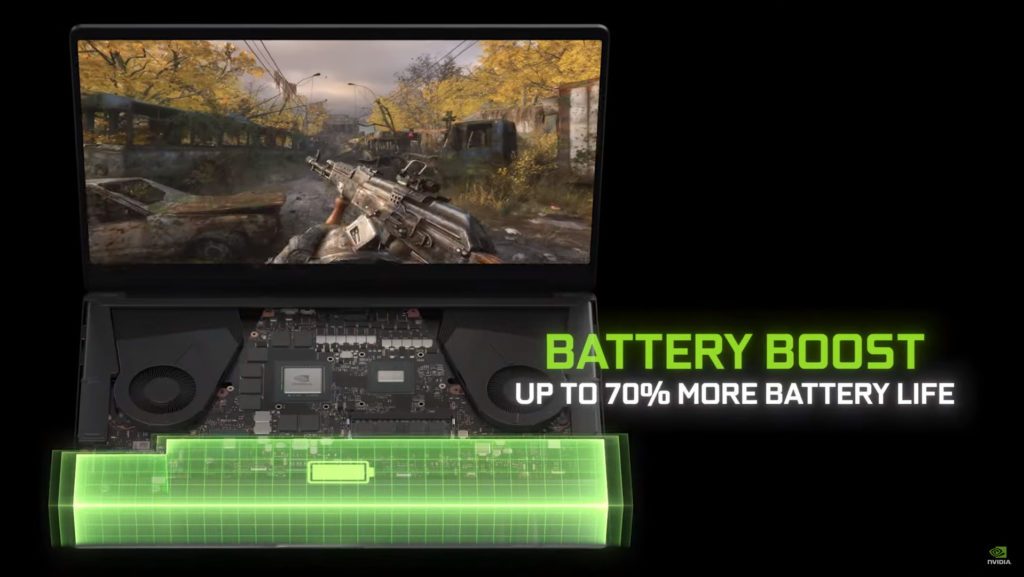
Great performance isn’t all that gamers and creators are looking for these days – laptop users want excellent battery life.
With the new and improved Battery Boost 2.0, AI takes charge. By managing the entire platform, AI ensures the best possible balance of GPU and CPU power consumption, battery life, picture quality, and frame rates. As the process occurs in real-time, you will be able to play for a longer period of time on a single charge, with up to 70% additional battery life.
4th Generation Max-Q Technologies Combined
The entire suite of Max-Q technologies is adaptive – it adapts to changes in workload in real-time and only activates when necessary to maintain maximum efficiency and performance.
Taken together, these 4th Generation Max-Q technologies combine with Dynamic Boost, WhisperMode, Resizable BAR, and DLSS to optimize performance and power consumption for gaming and content creation.
Join forces with NVIDIA
Powered by the NVIDIA Ampere architecture and fitted with technologies like DLSS, ray tracing, Reflex, and more, it is no wonder gamers and creators alike have made GeForce laptops the fastest-growing category in PCs. Now, with shiny new technologies like the GeForce RTX 3080 Ti and RTX 3070 Ti Laptop GPUs as well as 4th generation Max-Q, there are even more reasons to join forces with NVIDIA.
As mentioned, these technologies will feature in over 160 new designs from February 1st.
For the latest news on laptops and more, check out GeForce.com.


